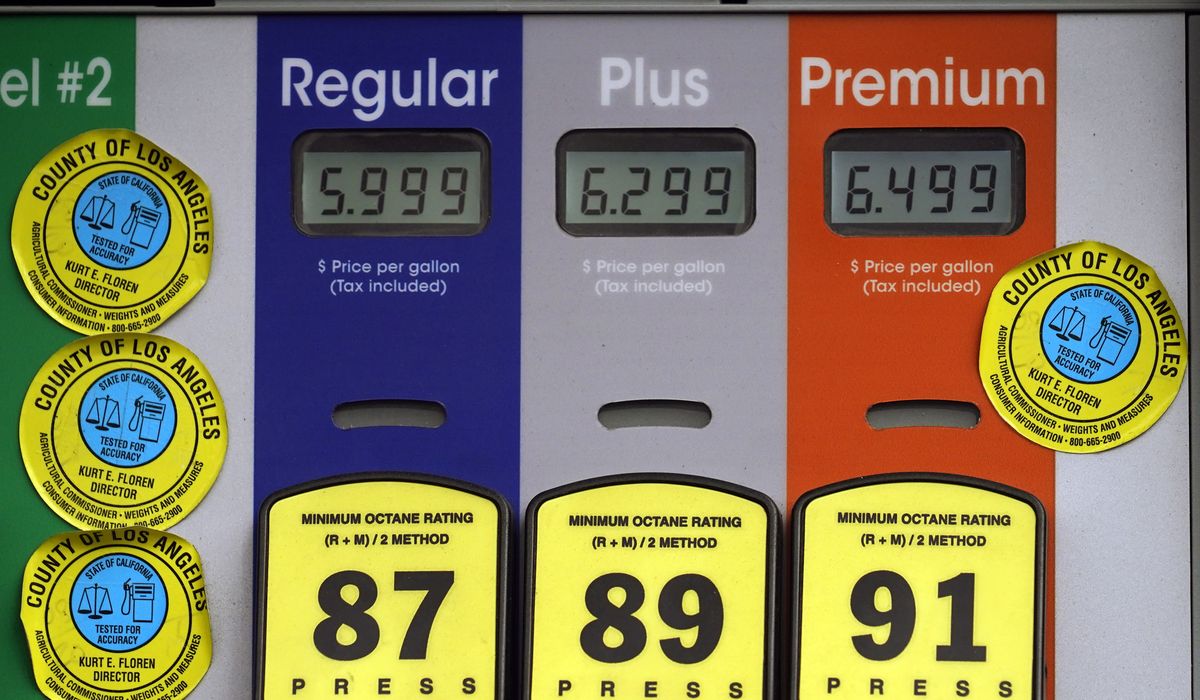
Wholesale prices at the end of October surged by 8.6% since October 2020, the highest year-over-year increase recorded by the federal government since it began tracking the data in 2010, the Labor Department reported Tuesday.
The report is bad news for consumers struggling with sticker shock as prices climb. It suggests that a high inflation rate is here to stay for a while despite the Biden administration’s insistence that it is temporary.
“This is worrisome because of the level,” said Antonio Saravia, an associate economics professor at Mercer University. “That’s a huge number. It’s the highest number we’ve seen in 11 years. It shows that inflation is not slowing down and prices continue to rise.”
Wholesale prices are what businesses pay for goods before making them available to the public. As wholesale costs rise, businesses often increase their prices, passing the expense along to consumers.
Wholesale prices of apparel, footwear, truck transportation, retail food and alcohol, hospital outpatient care, machinery, equipment, parts and supplies all surged last month, the Labor Department said.
The report also found that the core Producer Price Index (PPI), which measures price changes in goods and services sold, excluding highly volatile food and energy, also surged last month. Core PPI rose 6.2%, up from October 2020, also a record since the Labor Department began monitoring core PPI more than 11 years ago.
A 6.7% increase in gasoline prices accounted for a third of that increase, the Labor Department said. The national average price for a gallon of regular gasoline is $3.41, up about 40% from $2.42 in February 2020, according to the Department of Energy.
The Energy Information Administration estimates that households using natural gas for heat will spend 30% more than last winter. The agency, the independent statistics arm of the Energy Department, said the costs could be 50% higher if winter is 10% colder than average.
The agency estimates that the average U.S. household will spend $746 on natural gas heat this winter.
Investment bank Goldman Sachs warned this week that inflation will “likely get worse before it gets better.”
The Biden administration insists that prices are rising as a temporary effect of ending COVID-19 pandemic closures.
But prices are rising at rates not seen in 30 years, and the situation has worsened because chaos in the global supply chain has made some goods more difficult to obtain.
The Biden administration’s actions also have contributed to the inflation. The Federal Reserve has kept interest rates low, prompting businesses to demand more loans, which increases the supply of money in the economy, a fundamental cause of inflation.
On top of the low interest rates, Congress last week approved Mr. Biden’s $1.2 trillion infrastructure bill and is expected to begin debate soon on his $1.75 trillion social spending bill. Both measures will increase the flow of government spending, thus putting further pressure on the money supply.
Mr. Biden said the spending bills will ease inflation by creating jobs and reducing supply chain bottlenecks. The infrastructure bill, which is awaiting Mr. Biden’s signature, includes funding to modernize ports and highways to reduce supply chain logjams.
“The bipartisan infrastructure deal will help ease inflationary pressures, lowering costs for working families,” Mr. Biden said in a Twitter post Sunday.
He also has touted the massive social spending bill as a way to curb inflation. As Mr. Biden sees it, the bill would increase access to child care, bringing more parents into the labor market, thus lowering competition for employees.
With many workers sitting on the sidelines as the economy recovers from pandemic shutdowns, businesses have been forced to offer higher wages and bonuses to attract talent. Those increases are then passed along to consumers.
Mr. Saravia sees the situation differently.
“The supply chain and labor shortage raise prices, but inflation is always attributed to the money supply,” he said. “If we continue to spend at the pace we are spending, that is going to put pressure on the Fed to print money. It has to be a combined effort between the federal government and the Fed to slow down.”
After insisting that high inflation is temporary, Federal Reserve Chairman Jerome Powell last week acknowledged that prices won’t stabilize anytime soon.
“We see shortages and bottlenecks persisting into next year, well into next year,” Mr. Powell told reporters last week. “We see higher inflation persisting.”
Officials at the central bank signaled Monday that they could raise interest rates before the end of 2022 if inflation doesn’t ease.
The Fed has split on whether to raise interest rates in late 2022 or early 2023, but now it appears it will act sooner.
“The first three months of 2022 are going to be very important about what the Fed signals and if they are serious about stopping inflation,” Mr. Savaria said.








